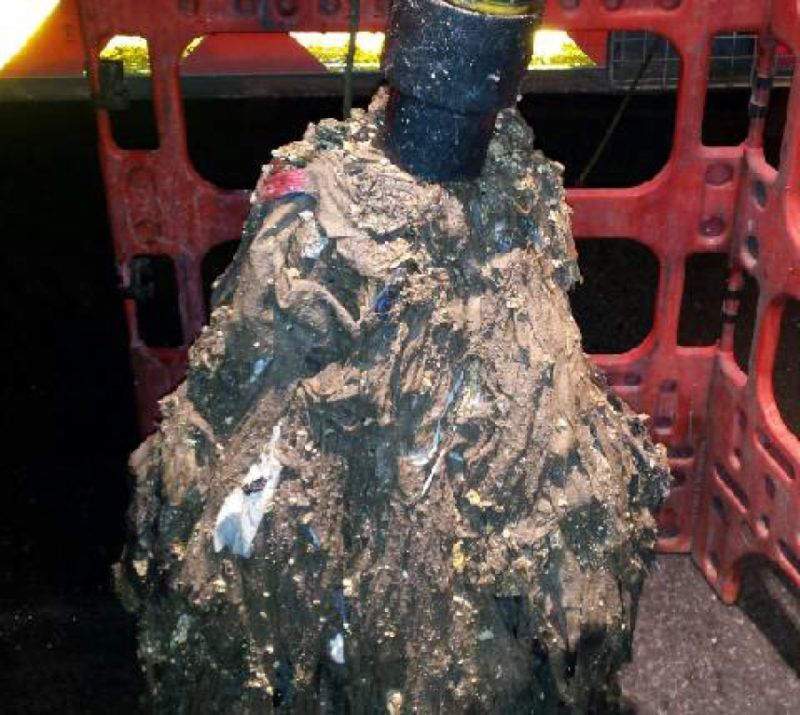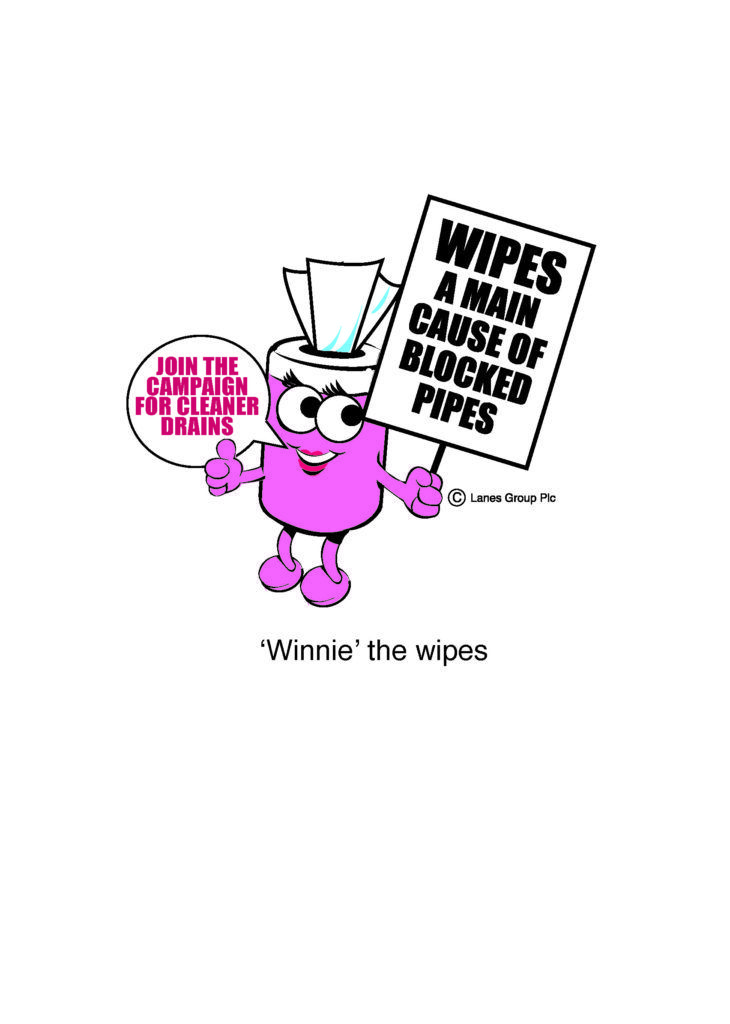Putting hidden and nonwoven plastic under the microscope

As part of our ‘Sinner or Binner’ campaign we’ve been discussing why sanitary products are a menace for our sewers and seas when they are not disposed of correctly.
In our previous blog post, we discussed why they’re so troublesome, and talked about the problem in detail. But exactly why are sanitary items so difficult to break down? It’s all because of hidden plastics.
In this blog post we’ll explain everything you need to know about hidden plastics, the sanitary items they appear in, as well as items you may not expect to contain plastic of any kind.
What are ‘hidden plastics’?
Hidden plastic refers to plastics you can’t see or readily identify as plastic. Pop into your local supermarket and you’ll find hidden plastic everywhere. Even if the fruit and vegetables aren’t packaged in plastic containers, the sticker on the front of them is almost certainly made of plastic! Tinned items are up next, including your favourite baked beans, soups and beers. Often tins made of aluminium are lined with a thin layer of plastic to prevent them spoiling or becoming contaminated with bacteria.
Check out cardboard cartons. Yep, you guessed it – they’re lined with plastic to make sure they’re waterproof. Your beloved tea bags could also be made of plastic, as newer teabags are 100% plastic mesh. Picking up health and beauty supplies involves grabbing plastic too – toothpaste, exfoliants and face washes can contain plastic microbeads.
As you head to the till, pay and the cashier hands you your receipt, look closer, yes, that receipt also contains plastic!
The problem with hidden plastic
Besides blocking our sewers and infesting our rivers and seas, hidden plastic makes it challenging for us to identify what we can and can’t recycle, or how to dispose of different products.
For instance, many sanitary items contain plastics woven directly into the cotton to make them more absorbent. In the case of tampons, when they’re incorrectly flushed down the toilet, they expand and absorb as much moisture as possible – simply doing what they’ve been designed to do. However, when they expand, they can cause blockages in our sewer system.
For things like the tea bags mentioned in the previous section, this non-biodegradable material (the mesh) is being mixed with biodegradable waste (the tea leaves), which makes it harder even for the biodegradable waste to be broken down.
And with microbeads, the problem is even more serious. When you have a shower or clean your teeth, these tiny particles, which are smaller than a grain of sand, enter our drains, sewers and seas through our plug holes. Water treatment facilities aren’t equipped to filter these plastics from our water, so they end up in our rivers and seas. They accumulate bacteria and toxins and are ingested by marine life such as fish. That means when we harvest fish from the sea for food, the plastic-ridden fish end up on our plates.
What can you do about hidden plastics?
The best thing you can do is be aware of the hidden plastics in the items you use and dispose of them appropriately. You can do this by checking the labels of items you use or contact manufacturers for advice on how to dispose of their products properly. It can be tricky adjusting your behaviour initially, but given time it will become second nature!
Here are a few examples of items containing hidden plastic and how to dispose of them properly:
Tampons, pads and other sanitary items
- What are they made of? Many non-biodegradable tampons are made of polyester, polyethylene and polypropylene, all woven into the cotton and rayon tampon itself. It is a similar situation for sanitary pads.
- How to dispose of them – Don’t flush used tampons or other sanitary items down the toilet – instead wrap them in toilet paper and dispose of them alongside your household rubbish. If you’re away from home, at work or in a public toilet, dedicated bins for sanitary items are the place to put them.
Wet wipes
- What are they made of? – It varies from each wet wipe, but some wipes can contain cotton, rayon and polyester all woven together to form an interlocking matrix of loops. Non-woven wet wipes are made using a single sheet of material from a mass of separate fibres. These can include cotton, rayon, polyester, polyethylene, and polypropylene.
- How to dispose of them – It’s a similar situation with these items to those above – make sure you throw them in the bin instead of flushing them down the toilet. They’re non-recyclable and as such will need to be taken to landfill.
Help us spread the word!
We are serious about raising awareness about the dangers of hidden plastics and helping the public understand how these items should be disposed of responsibly. But we can’t do it alone – so can you help us spread the word? Why not speak to your friends and family about what you’ve learned in this blog post to help us reduce the hidden plastics problem as best as possible.









[…] pollution causes on a global basis – and you may also understand the critical role that hidden plastics play in exacerbating this […]